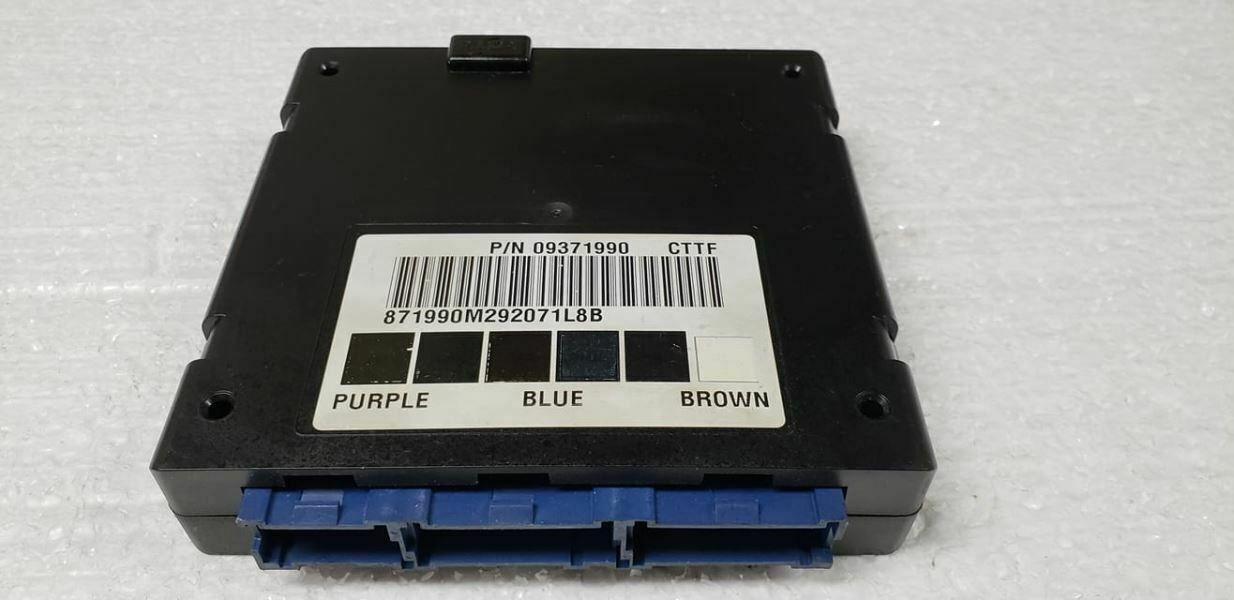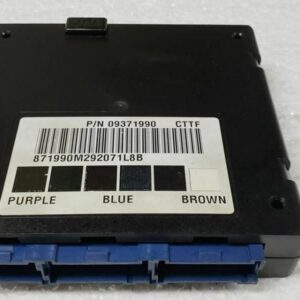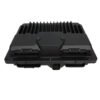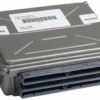Restore Your Truck’s Electrical System with a Plug-and-Play BCM
Are you chasing down bizarre electrical gremlins in your GM truck or SUV? Flickering headlights, power windows with a mind of their own, or a security light that won’t turn off are classic signs of a failing Body Control Module (BCM). The BCM is the central hub for your vehicle’s body electronics, and when it goes, it can make your reliable truck feel unpredictable. This isn’t just an annoyance; it’s a matter of function and safety. This replacement 2000 Yukon Body Control Module is the definitive solution, arriving at your door programmed with the latest GM software specifically for your vehicle’s VIN.
A Technician’s Notebook: The Case of the Haunted Silverado
I had a 2000 Silverado 1500 in the bay last month that was driving the owner crazy. The dome lights would randomly turn on while driving, the power locks would cycle on their own, and sometimes the radio would just die. He’d already replaced the battery and checked the grounds. After hooking up my scan tool, I saw a handful of communication error codes (U-codes) pointing to the BCM. These early GMT800 platform trucks are notorious for BCM failures due to internal solder joint cracks from years of heat cycles. We installed one of these pre-programmed modules, and it was like flipping a switch. All the phantom issues vanished instantly. It’s a textbook fix I’ve performed hundreds of times.
Common Signs of a Failing BCM
- ✔ Erratic or non-functional interior and exterior lights (headlights, dome lights, dash lights).
- ✔ Power windows, door locks, or mirrors working intermittently or not at all.
- ✔ The security or anti-theft system light stays on, potentially causing a no-start condition.
- ✔ Inaccurate or dead gauges on the instrument cluster.
- ✔ False warning messages on the driver information center (e.g., “Service 4WD”).
- ✔ Communication DTCs like U0140, U0155, or internal fault codes like B1001.
- ✔ Unresponsive keyless entry remote.
A Straightforward Guide to Installation
Replacing the BCM is a job most DIYers can handle in under an hour. Our pre-programming service saves you a costly trip to the dealership. Just follow these general steps:
- Safety First: Always disconnect the negative terminal from your vehicle’s battery before working on any electronic components.
- Locate the BCM: On most of these trucks and SUVs, the BCM is located under the driver’s side of the dashboard, to the left of the steering column. It’s a black plastic box with several large multi-pin connectors.
- Remove Connectors: Carefully unplug all electrical connectors from the old BCM. They have locking tabs that need to be depressed to be released. Do not force them.
- Swap the Module: Unbolt or unclip the old BCM from its mounting bracket and remove it. Install the new module in its place.
- Reconnect Everything: Plug all the electrical connectors firmly into your new, pre-programmed BCM. Reconnect the negative battery terminal.
- Test and Verify: Start the vehicle and test all the functions that were previously malfunctioning—lights, locks, windows, etc.
Important Post-Installation Steps
Because this module integrates with other vehicle systems, a couple of additional procedures may be required after installation. This is normal for this type of repair.
- Airbag System Sync: If your airbag warning light is illuminated after installation, the new BCM needs to be synced with the airbag’s Sensing and Diagnostic Module (SDM). This procedure, often called ‘Setup SDM Primary Key in BCM’, must be performed with a professional-grade diagnostic tool. This is only necessary if the light is on.
- Brake Pedal Position Relearn: On some models, a brake pedal position sensor relearn may be needed to ensure your brake lights and traction control system function correctly. This is also performed with a compatible scan tool.
Verified Vehicle Compatibility
This module is a direct replacement for part numbers 19208539, 9371990, and 9385236. It is guaranteed to fit the following models and options:
- 2000 Chevrolet Silverado 1500 & 2500 (LH dash)
- 2000 GMC Sierra 1500 & 2500 (LH dash)
- 2000 Chevrolet Tahoe (LH dash)
- 2000 Chevrolet Suburban 1500 & 2500 (LH dash)
- 2000 GMC Yukon (exc. Denali) (LH dash)
- 2000 GMC Yukon XL 1500 & 2500 (LH dash)
- 2001 Chevrolet S10 / GMC Sonoma (center dash)
- 2001 Chevrolet Blazer / GMC Jimmy S15 (center dash)
- 2001 Oldsmobile Bravada (center dash)
- 2001 Chevrolet Astro / GMC Safari (LH dash)
Frequently Asked Questions
2000 Yukon Body Control Module
Why do you need my VIN?
Your Vehicle Identification Number (VIN) allows us to program the with the exact software and vehicle-specific options from GM’s database. This ensures it works correctly right out of the box, just like a part from the dealership, but without the extra programming fees.



